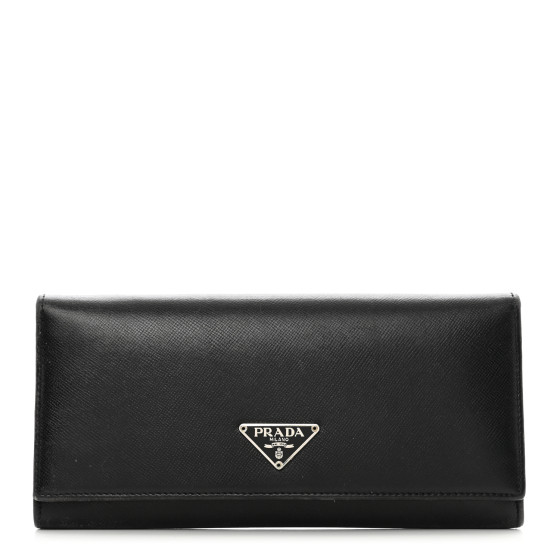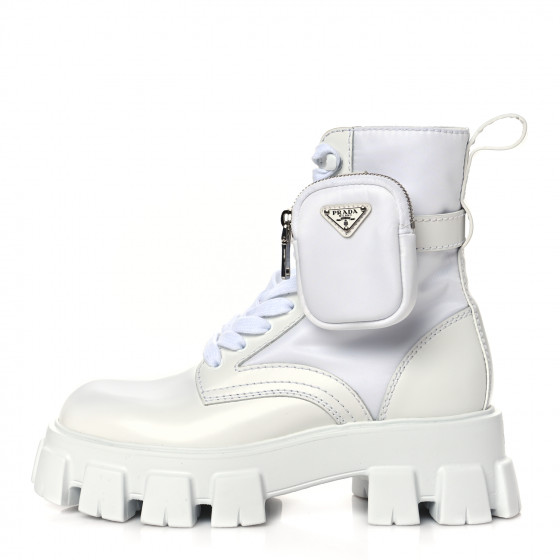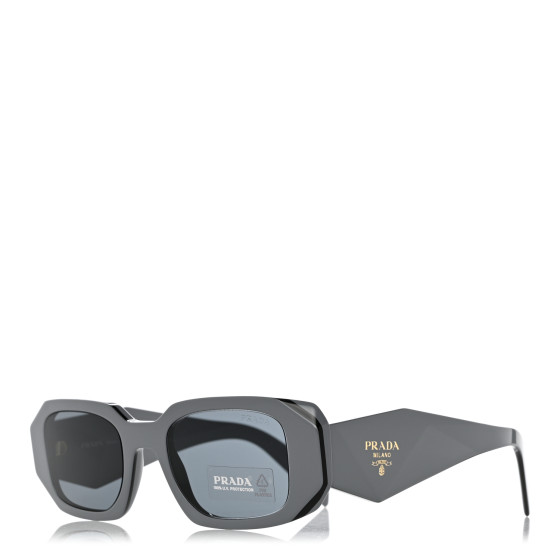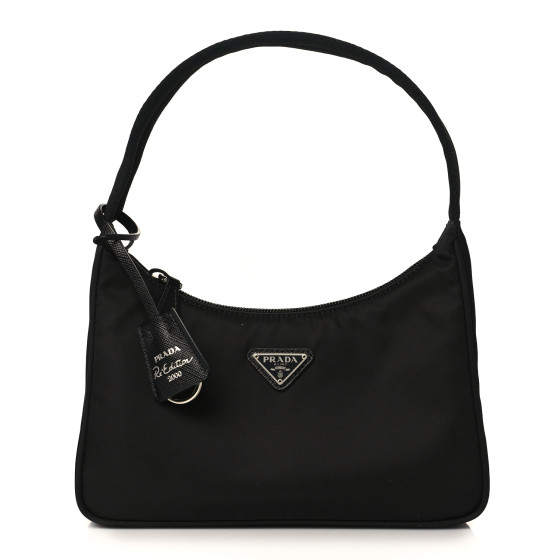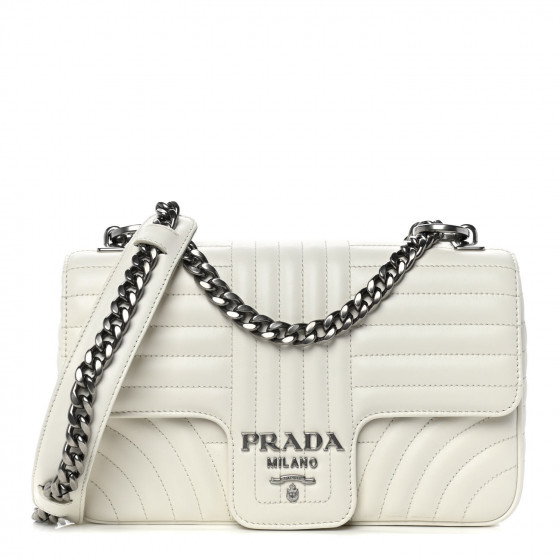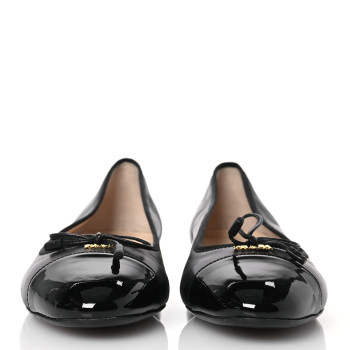Skip to sign inSkip to shop categoriesSkip to main contentSkip to footerSkip to accessibility statement
Prada
In 1913, brothers Mario and Martino Prada formed Fratelli Prada, a fashion house in Milan, Italy, that sold leather goods and imported British steamer trunks and handbags. Despite the brothers’ staunch belief that women had no part in the workings of a business, it was not Mario’s son, but instead his daughter Luisa who took control of the business as his successor years later. She would remain in this role for the next 20 years. Luisa’s daughter, Miuccia, joined the family business, now known simply as “Prada,” when she began making waterproof backpacks out of a nylon fabric called Pocone. Miuccia would eventually inherit the family business years later, in 1978. Around that same time, Miuccia met Italian leather goods trader Patrizio Bertelli, who encouraged her to stop selling British luggage and instead focus on designing and selling the company’s own bags. Bertelli was made Miuccia’s business partner shortly thereafter.
Miuccia began to incorporate her own designs into the company, releasing her first line of totes and backpacks made of the durable Pocone fabric in 1979. Prada’s sales catapulted up to $450,000 as a result. Having already made a name for themselves in Milan, Miuccia and Bertelli expanded the company further, with locations in Florence, Paris, New York, and Madrid. The business itself also expanded with the launch of a new shoe line in 1984. A year later, Prada released their “classic Prada handbag,” which became an instant hit with its sleek lines, practical durability, and simple, though luxurious, elegance.
Miuccia and Bertelli wed in 1987, and two years later the company launched a new women’s ready-to-wear collection. The collection included designs that utilized sleek lines and basic colors, but were made with extravagant fabrics. And unlike other designers of the time, who displayed their labels prominently on their designs, Prada’s logo was unassumingly simple, creating a sort of “anti-status” status for their company by suggesting that it was the quality of their designs, and not a fancy logo, that made their products sell.
It was this inauspicious reputation along with the originality of their designs that made the Prada brand one of the most sought-after status symbols of the 1990s. According to New York Times writer Ginia Bellafante, the success of the Prada brand could be traced to the “working class” theme so apparent in its designs. Bellafante remarked that Prada designs perfectly reflected the “high-tech, IPO-driven early 1990s.” Interest in the brand was further heightened as Miuccia and Bertelli continued a cautious expansion of the business, making Prada products harder to find and therefore highly sought-after.
In 1993, fashion executive Patrizio di Marco became president and CEO of Prada America, and was in this role until 1998. To catch the attention of fashion editors, Di Marco had Prada handbags displayed in the most prominent places of department stores. This strategy worked, and the success of the growing brand was reflected in the 31.7 million dollars in sales in the year 1998.
The expansion of the business saw Prada flagship stores, designed by such acclaimed architects as Rem Koolhaas and Herzog & de Meuron, cropping up in various locations around the globe. In late 2008, a duplex megastore opened in Kuala Lampur. In Seoul, Korea, Prada opened the Prada Transformer, a structure that changes shape, with the use of cranes to rotate the building, based on its function. In 2009, a new Milan store was opened on Corso Venezia. This building, designed by architect Robert Bacciocci, housed the business’s “Made-to-Order” collection. Prada next opened its largest store in Dubai’s Mall of the Emirates in the year 2012.
Prada continues to be one of the most fashion houses around the world. Known for the simple elegance of their design and their high-quality materials, Prada products have become international symbols of style and opulence. Celebrities and debutantes are often photographed striking a pose while clutching their favorite Prada handbag or Prada wallet.
798 items


Prada Re-Nylon Impuntu Quilted Re-Edition 1995 Chaine Small Tote Bag Black
Condition: Excellent
$1,295


Prada Jacquard Calfskin Triangolo Symbole Embroidered Mini Triangle Double Bag Black Alabastro
Condition: Excellent
$2,195


Prada Spazzolato Rois Nylon Metal Triangle Logo Monolith Pouch Pocket 55mm Boots 38.5 Black
Condition: Shows Wear
$950


Prada Spazzolato Metal Triangle Logo Small Double Handle Crossbody Tote Acqua
Condition: Excellent
$1,395


Prada Yarn Raffia Effect Crochet Embroidered Mini Re-Edition 1978 Shoulder Bag Celeste
Condition: Excellent
$1,750


Prada Jacquard Calfskin Triangolo Symbole Embroidered Mini Triangle Double Bag Black Ciliegia
Condition: Excellent
$1,450


Prada Saffiano Soft Calfskin Metal Triangle Logo Envelope Chain Shoulder Bag Silver
Condition: Shows Wear
$1,150


Prada Re-Nylon Saffiano Stitched Re-Edition 1995 Chaine Shoulder Bag Brandy
Condition: Excellent
$1,595


Prada Spazzolato Rois Re-Nylon Metal Triangle Logo Monolith Pouch Pocket 55mm Boots 35.5 Black
Condition: Shows Wear
$850


Prada Jacquard Saffiano Triangolo Symbole Embroidered Micro Tote Black Corda
Condition: Excellent
$1,995

